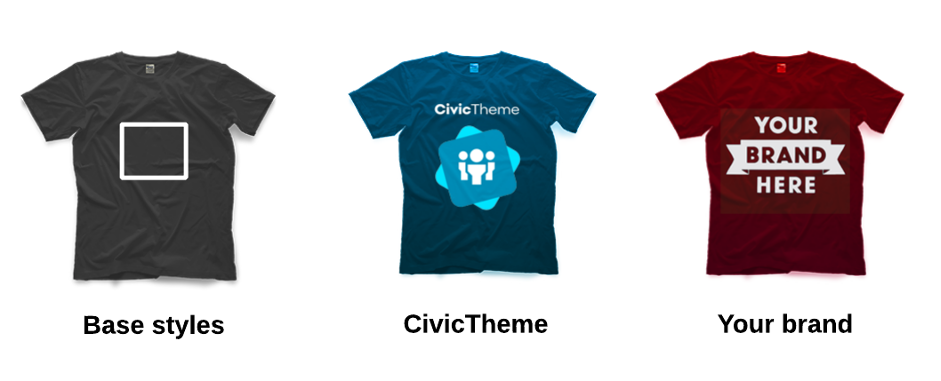
What inspired the creation of Launchpad?
Setting up, configuring and hosting a website is often manual and relies on humans, processes and time. This is particularly prominent for large enterprise/government organisations with multi-digital-portfolio programs where onboarding involves regulations, bureaucracy and procedures before customers can even try out the products. The typically linear chain of events creates friction points and unnecessary lead times for both the custodians and their customers.
Launchpad was created as a direct response to this challenge. It’s a web application provisioning tool that lets you set up and deploy tailored sites for users to experience instantly.
Self-service. Rinse. Repeat.
With innovation at the forefront, we perpetually hunt for common problem patterns that can be solved by fusing together technology and creative thinking.
So all this got us thinking…Wouldn’t it be cool if there was a way to deliver a simple, yet rich self-service experience for users to effortlessly create sandbox environments in just a matter of minutes?
What is Launchpad?
Launchpad is the solution we built to allow people to quickly provision their own tailored web application sandboxes without a need for developers, any coding or technical knowledge.
At its core, it consists of 3 main parts:
Setup wizard — a guided visual experience that prompts users to add their desired site details such as branding, logo, templates, content, metadata, etc.
Automated deployment — a set of deployment scripts that take care of applying collected user input, then building and deploying the resulting project.
Hosting platform — a platform that serves the created sandbox environment to the web.
And the best part? None of these components are set in stone and can be adjusted or even swapped to work in whichever way needed. But how?
Any product. Any brand. Any platform.
In our recent introduction of CivicTheme for Drupal we mentioned that we leveraged the Launchpad tool so customers can spin-up CivicTheme-powered Drupal 9 websites by simply entering their specific website information like fonts, colours, metadata, logo and other branding. This makes it super easy to create a customised site and has been very well received by our clients who’ve taken it for a test drive.
There are also additional benefits of Launchpad. Our integral focus was to ensure that the tool is designed and architected so that it is:
Flexible, extendable and configurable — to ensure that it can accommodate a variety of use-cases, even if they’re custom and/or unique.
Content-manageable — to allow non-developers to manage the setup wizard journey, change content as required, re-order the journey steps, enable/disable steps, etc. Non-developers can also manage the ‘submissions’ — the requests for site provisioning — along with the information such as who requested it, when, what the status is, what the URL is, etc.
Platform and product agnostic — so it can be used to provision any website on any platform and not be tethered to a specific infrastructure setup.
White-labeling — the ability to support ‘flavouring’ so it can reflect the underlying brand and product.
Integratable — the software needs to run on a powerful framework that allows it to be integrated with other services easily.
Create a platform in your chosen colours and branding
What is the tech?
There were some genuine keyboard wars during our ‘fit-for-purpose’ assessment of the stack to power Launchpad. But then we all virtually hugged and landed on the following:
Laravel —a lean yet powerful open-source framework with wide community adoption and support. Laravel delivers the backend functionality that orchestrates all the components and controls the entire experience using the API-first approach.
Voyager — a contributed Laravel package that brings an admin panel. This is where platform admins can control the journey presented to users via the UI without having to write code.
Bootstrap — an open-source CSS framework directed at responsive, mobile-first frontend web development. It takes a lot of frontend scaffolding and its management overhead away and streamlines the development. Launchpad styling and branding mechanisms are built on top of Bootstrap’s base library, which enables for much of the customisations to be done with minimal or no coding at all.
JavaScript/JQuery — a popular, go-to technology for modern interactive and dynamic user-facing experience.
With the self-serving approach that Launchpad takes, it creates a great opportunity for . Quant is a disruptive technology for making sites faster, more secure and cheaper to run. Although optional, we’ve been successfully using QuantCDN to serve static versions of the sites provisioned by Launchpad to save on hosting costs. You can read more about this technology in our recent article Using QuantCDN for Drupal.
Use cases
Launchpad is designed to provision instances of any web application on any platform. However, the use-cases that would see the greatest impact would usually be the ones that currently rely on a customer onboarding experience that’s otherwise manual and time-consuming.
For example, let us consider an organisation that offers one or more web-based products. They want their prospects to experience those products without any friction or delays. Launchpad is ideal in this context as it provides a self-service tool for the users to configure, deploy and tinker with the products, avoiding any external help or special knowledge.

